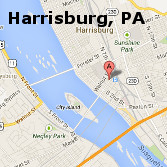Would love to present Cinemablography as a 2- to 3-minute Dork Short.
From an ordinary stack of ungraded film analysis papers was born an idea: what if, instead of just writing about film production theory, students could collaborate to demonstrate what they had learned by turning papers into films? Cinemablography is the Messiah College Communication Department’s experimental answer to this question.
Initially comprised of student-produced and directed interviews, retrospectives, travelogues and examinations, Cinemablography has developed into a semesterly showcase of student work from various disciplines in the Communication Department. It serves as a digital archive of film exploration through collaborative student efforts under the direction of Fabrizio Cilento, beginning with “Mapping the 2000’s.” This issue of the site represents the effort to document and critique cinematic tendencies of the millennium thus far – a potentially infinite project, and an important starting point for greater conversation. Projects focused on dissecting the history of the 2000s while highlighting the major innovations of the biographical, aesthetic, technological, and economic aspects of the industry. Examples include Kathryn Bigelow’s iconic filmmaking style and subsequent Academy Award; Banksy’s rogue cultural commentary in Exit Through the Gift Shop; Christopher Nolan’s cinematic reimagining of Batman’s dark themes; Pixar’s complete overhaul of computer animated storytelling; and Martin Scorsese’s tribute to George Méliès: the film Hugo, which masterfully blended old and new.
Due to the labor-intensive nature of this work students must sacrifice quantity for quality, limiting major site updates to about once per semester. Because film culture changes so rapidly, however, it became apparent that an ongoing, short-term social media and blog component would enhance the overall goals of Cinemablography. Updated weekly by student writers, the blog exists to foster discussion of current films and topics relevant to film and digital media. It reviews trailers and film scores for their effectiveness and merit; highlights the work of particular directors with in- depth examinations of their careers; and selects films made prior to the year 2000 to review for their importance and relevance to the modern film landscape. It also discusses short films, behind the scenes footage, and industry news through a developing presence on social media platforms such as Facebook and Twitter. We are looking for collaborators to grow the site (specifically in conjunction with other colleges), whether as writers, web designers, filmmakers, or social media managers.
Cinemablography is poised to bridge a gap between popular culture and academia, and the students who feed its ever-expanding catalogue hope that their work contributes to a larger conversation.





Colleen, I hope you make it this morning so you can give a short presentations about cinemablography to the group. I had thought Fabrizio was doing this, but I think he has family responsibilities. If you will be here we’ll love having you do it.